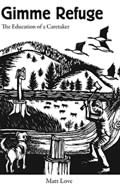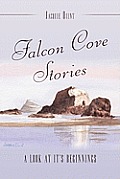
One overcast day in the spring or summer of 1971, it's not exactly clear what month it was, a white van came to a stop in the remote North Oregon Coast village of Falcon Cove, where residents enjoy the near exclusive use of one of the most secret and gorgeous beaches in the state.
Back then, maybe a dozen folks lived in Falcon Cove year round, quite likely the same number as today.
A man emerged from the van. He probably carried all manner of camera gear: bodies, lenses, tripod.
A woman, a blonde, Javon Monahan, an artist and former Portland State University student, also emerged from the van. She probably wore some kind of loose-fitting long coat. She wore nothing else underneath.
They went to the beach. At some point, she flung away the coat and the unknown photographer clicked away.
A color photograph of a naked and smiling Monahan running through light foam down the wet sand of a beach appeared in the September issue of Playboy, part of a pictorial essay titled, "Girls of the Golden West: A tantalizing blend of simplicity and sophistication, these natural beauties glory in their free-spirited way of life."
The photo's caption located the beach as somewhere "near Seaside," and the sandy beach does not resemble the cobbled one at Falcon Cove. I can't place it myself. What I surmise happened is that Monahan made several stealth streaks at various unpopulated North Oregon Coast beaches and the best photograph made it into the magazine.
As for the photograph, if contrasted with contemporary depictions of beautiful American women in the mass media, which are almost all uniformly vulgar, Monahan looks organic. Her unadorned image seems to me almost totally benign as far as exploitation of women goes (okay, I admit it was in Playboy). The photograph moves in hazy slow-motion in washed out greens and grays and exudes a pronounced hippie vibe. In other words, for many of us, daily life on the Oregon Coast.
 I gleaned this tale from a fantastic little self-published memoir written by Jacquie Quint called Falcon Cove Stories: A Look at Its Beginnings (published in 2010), which I picked up during a recent stay in the area.
I gleaned this tale from a fantastic little self-published memoir written by Jacquie Quint called Falcon Cove Stories: A Look at Its Beginnings (published in 2010), which I picked up during a recent stay in the area.
Upon my return home, I immediately went online and purchased the September 1971 issue of Playboy for $10. The magazine arrived a few days later, and thumbing through its pages was an instant time machine trip to a pre-Watergate America of flared corduroy trousers, hi-fis, rum and Coke, and really big afros.
Naturally, I would love for readers to see the entire photograph, but I include only a teaser of it here as not to violate various restrictions. Just imagine Monahan's beach run though! Or, better yet, recreate one for yourself. If you don't live near the beach, the forest will do. The desert will, too.
According to Quint's book, a prudish neighbor who saw the photo shoot unfolding called the Sheriff's office. Fortunately, Monahan and the photographer worked fast. They climbed back in the van and drove away before the law arrived. Where they went next is anyone's guess, but somewhere in this world, there are lost or forgotten negatives of all of Monahan's glorious runs, and I would dearly love to see them developed. Strictly for the sake of historical preservation, I assure you.